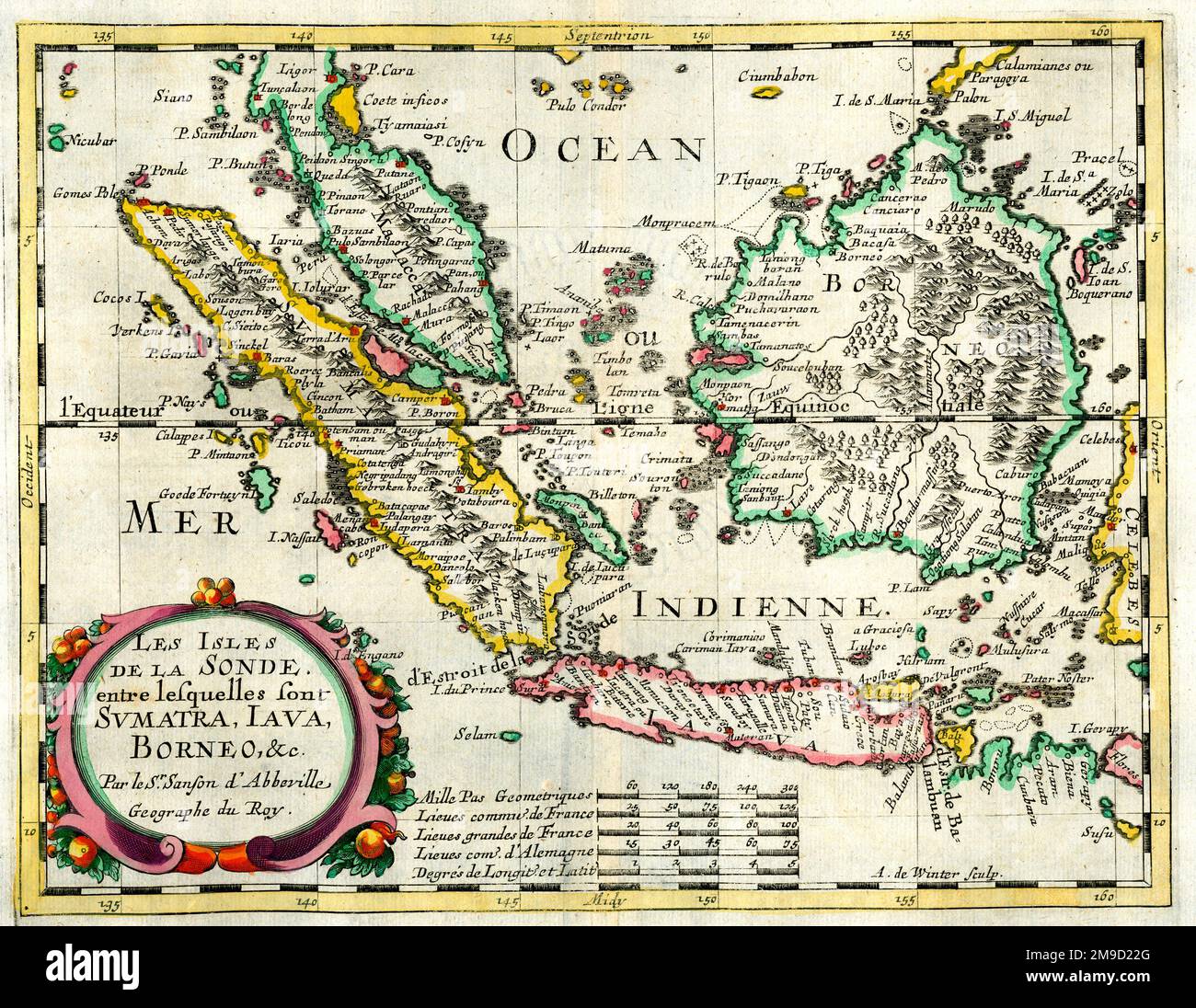Imagine traveling to faraway lands in the Middle Ages, before the age of airplanes and maps. Brave explorers from Europe set sail for mysterious islands like Java and Sumatra, not knowing what they would find. These adventurers, driven by a thirst for knowledge, riches, and cultural exchange, embarked on journeys that would leave an indelible mark on history.
Who Explored Java and Sumatra Before Marco Polo?
While Marco Polo often steals the spotlight when it comes to historic journeys, numerous adventurers journeyed to the islands of Java and Sumatra long before him. Their captivating stories, each unique in its own right, unveil a rich tapestry of exploration and cultural exchange.
As early as the 9th century, Arab scholars, fueled by curiosity, ventured to these exotic lands. Ibn Khurdadhbih, for instance, documented a place called “Zabaj,” probably Java, renowned for its gold and spices. Al-Mas’udi, another prominent scholar, shared tales of powerful Javanese kingdoms and their expansive trade routes. These early explorers, much like today’s travel bloggers, offered the world a glimpse into these fascinating islands.
Interestingly, Arab scholars weren’t the only ones intrigued by Java and Sumatra. In the 7th century, Chinese Buddhist pilgrims, like the monk I-Tsing, journeyed to these islands, meticulously documenting their travels and experiences. They marveled at the flourishing Buddhist culture and recognized the islands as important centers of learning. Their accounts provide a fascinating glimpse into the interconnectedness of ancient Asia through maritime routes, challenging the idea that globalization is a modern phenomenon.
By the 13th century, Europeans, too, were captivated by the allure of the East. While Marco Polo’s adventures are widely celebrated, contemporaries like Odoric of Pordenone and Niccolò de’ Conti offered their own captivating narratives. They were enthralled by local customs, religions, and the flourishing spice trade, returning with tales of exotic spices like cloves, nutmeg, and pepper—prized commodities more valuable than gold at the time.
These spices, in fact, played a pivotal role in medieval trade. The allure of these exotic flavors fueled many early voyages. Beyond their culinary uses, these spices held immense value for medicine and contributed significantly to the wealth and influence of traders. They were, in essence, the ancient world’s equivalent of oil.
While these early accounts paint a vivid picture of Java and Sumatra, there’s still much we don’t know. Further research could help us uncover and understand the misconceptions travelers might have had, reconstruct their routes in greater detail, and explore the often-overlooked roles women played in these journeys. By challenging traditional narratives and embracing new perspectives, we can gain a richer understanding of these fascinating pre-colonial societies.
So, while Marco Polo’s name might be synonymous with exploration, remember that he was just one of many intrepid travelers who ventured to Java and Sumatra. Medieval travel to these islands was a vibrant tapestry woven from diverse cultures and motivations. By exploring these lesser-known stories, we uncover a world of adventure, cultural exchange, and the enduring human desire to explore the unknown. Who knows what other treasures await discovery?
Were Java and Sumatra Once Connected?
Java and Sumatra, two of Indonesia’s largest islands, are currently separated by the narrow Sunda Strait, a mere 15 miles wide. This geographical proximity begs the question: were these islands always separated by water?
Surprisingly, the answer is no. During the last ice age, these two islands were part of a much larger, contiguous landmass known as Sundaland. Even more astoundingly, Sundaland was connected to mainland Asia!
Over millennia, however, things changed dramatically. As the ice age ended and temperatures rose, the sea level gradually rose, slowly submerging Sundaland. This process ultimately led to the separation of Java and Sumatra into distinct islands around 10,000 years ago.
The evidence for Sundaland’s existence is compelling. Firstly, the Sunda Strait is remarkably shallow, with an average depth of only about 160 feet, suggesting it was once dry land. Furthermore, geologists have discovered traces of ancient river systems that seemingly flowed directly between Java and Sumatra—a strong indication of a prior land connection.
This separation profoundly impacted the development of each island. Java, with its fertile volcanic soil, became a hub for agriculture and consequently experienced significant population growth. Sumatra, on the other hand, remained less populated, becoming a haven for biodiversity and lush rainforests.
Despite their separation, Java and Sumatra share striking cultural and linguistic similarities, pointing towards a deep and intertwined history. This shared heritage speaks volumes about their connected past, even after they drifted apart.
The story of Java and Sumatra serves as a powerful reminder of our planet’s dynamic nature. What we perceive today as distinct islands were once part of a much larger landmass, shaped and reshaped by natural forces over millennia. And as scientists continue to explore the mysteries of our planet’s past, who knows what other fascinating discoveries await?
Who Conquered Java and Sumatra?
The history of Java and Sumatra is a captivating saga marked by the rise and fall of empires. As the mighty Srivijaya empire, renowned for its control over maritime trade, began to decline in the 13th century, a new power emerged from the east: the Mongols. Their attempted conquest of Java in 1293, however, was met with fierce resistance from the Singhasari kingdom, ultimately leading to a humiliating defeat for the Mongol army.
Fast forward to the 16th century, a time when the allure of spices was at its peak. The Portuguese, ever opportunistic traders, established a strategic trading post in Malacca, giving them a significant advantage in the lucrative spice trade—much to the envy of other European powers.
This European rivalry intensified in the 17th century with the arrival of the Dutch East India Company (VOC). The VOC established a presence in Java and Sumatra, and through shrewd tactics and, at times, forceful measures, they gradually wrestled control from the Portuguese. The VOC’s dominance, however, was not to last.
In the 19th century, the VOC was replaced by the Dutch East Indies, who would rule over these spice-rich islands until Indonesia’s hard-fought independence in 1945. It’s important to note that the Iceni tribe, much like the people of Java and Sumatra, fiercely resisted foreign rule. Led by the courageous Queen Boudica, they fought valiantly against Roman invaders in ancient Britain.
The history of Java and Sumatra, much like the story of the Iceni, is a testament to the complexities of conquest, resistance, and the enduring human spirit in the face of oppression.
Why Does Java Have More People Than Sumatra?
One striking difference between Java and Sumatra is their population density. Java, despite being significantly smaller than Sumatra, boasts nearly three times the population. What factors have contributed to this disparity?
Historically, Java has long been a center of power and influence. Mighty kingdoms like Majapahit and Mataram ruled for centuries, drawing people seeking opportunity and stability. This historical significance, coupled with the development of infrastructure and urban centers, contributed significantly to Java’s population growth.
Java also benefits from favorable geography. Its volcanic activity, while potentially destructive, has endowed the island with incredibly fertile soil, ideal for agriculture, especially rice cultivation. This abundance of food historically supported a larger population compared to Sumatra’s more mountainous and forested terrain.
In the modern era, Java has emerged as Indonesia’s economic powerhouse. The island is home to the majority of the country’s industries, businesses, and employment opportunities. This economic dominance continues to attract internal migration from other islands, including Sumatra, as people seek better lives.
While the Indonesian government implemented transmigration programs in the 20th century to alleviate population pressure on Java by relocating people to less populated islands like Sumatra, these initiatives had limited success. Many who relocated were eventually drawn back to Java’s economic opportunities.
The population disparity between Java and Sumatra, therefore, is the result of a complex interplay of historical, geographical, and economic factors. Java’s fertile land, history as a center of power, and economic dominance have made it a magnet for migration, while Sumatra, despite its vast natural resources, has faced challenges in replicating this growth trajectory.
It remains to be seen how population distribution in Indonesia will evolve over time. Some experts believe that as Indonesia continues to develop, the gap between Java and Sumatra might narrow. Perhaps Sumatra will experience its own economic boom, attracting more residents and narrowing the population gap. Only time will tell how this fascinating demographic story unfolds.
- Unlocking Francis Alexander Shields’ Finance Empire: A Comprehensive Biography - July 12, 2025
- Unveiling Francis Alexander Shields: A Business Legacy - July 12, 2025
- Francis Alexander Shields’ Business Career: A Comprehensive Overview - July 12, 2025
















1 thought on “Beyond Marco Polo: Unveiling the Medieval Travelers to Java and Sumatra”
Comments are closed.